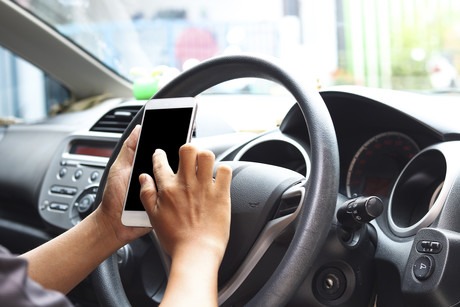Drivers don't recognise dangers of mobile phone use

Fear of missing out and separation anxiety are leading to people texting while driving, according to a new study.
The study, 'Should I text or call here? A situation-based analysis of drivers' perceived likelihood of engaging in mobile phone multitasking', also found that those who text and drive are six times more likely to have an accident, but the majority of drivers still do not see texting as dangerous.
Researchers surveyed 447 drivers in South East Queensland, Australia, who answered questions about perceived crash risk, perceived driving comfort, perceived driving difficulty, perceived driving ability, perceived likelihood of engaging in a voice call and perceived likelihood of engaging in texting.
It was found that drivers who are female, are frequent users of phones for texting/calling, have negative attitudes towards safety and are highly disinhibited report much stronger intentions of engaging in distracted driving. The research team included Oscar Oviedo-Trespalacios, Md. Mazharul Haque and Mark King from Australia Queensland University of Technology, and Simon Washington from the University of Queensland.
The authors conclude that females are more likely than males to engage in mobile phone use while driving. More experienced drivers are less likely to engage in distracted driving. Results show that as the number of years with a licence increase, the probability of participating in distracted driving decreases, and drivers who are more disinhibited are more likely to drive distracted.
In the US, mobile phone usage has been a factor in one-quarter of all car collisions. However, actual crash risks vary based on the type of task being performed and the extent of its cognitive and physical demands on the driver. Talking on a mobile device increases crash risk by 2.2 times whereas texting increases risk by 6.1 times.
Observational studies have found that as many as 18% of drivers in high-income countries, and up to 31% in low- and middle-income countries, use their mobile devices while on the road, contributing to significantly reduced road safety.
The researchers found that drivers engage in self-regulation when deciding whether to use their phones while driving, which is a process through which individuals develop strategies to cope with environmental factors while maintaining a high level of performance. For example, many drivers make use of stops to initiate using their mobile device, and many are able to restrain themselves to using phones only while stopped at intersections with signals. Many other researchers have also noted that drivers usually restrict engagement in heavy traffic or along curved sections of both urban and rural roads. This study sought to identify what factors contribute to self-regulation.
The researchers also found that drivers who hold the following beliefs are more likely to use a mobile device while driving: effects on driver are minor; I need a lot of convincing to believe it is dangerous; effects will last after the task is finished. 68% of participants reported needing a lot of convincing to believe in the dangers of texting and driving. However, demanding traffic conditions and the presence of law enforcement were reported as effective measures in reducing the likelihood of distracted driving. These results support high-visibility police enforcement programs as a means to combat distracted driving.
"Drivers are not good at identifying where it is safe to use their phone; it is safer for drivers to just pull over in an appropriate place to use their phone quickly and then resume their journey," said Oviedo-Trespalacios.
Drivers were much more likely to talk on their phones while driving than they were to use their phones to text. This is expected since the visual demands of texting compete directly with those of driving, whereas talking on the phone is mostly auditory.
The results from this study may contribute to more targeted distracted driving campaigns by highlighting opportunities for interventions. These campaigns should target safety attitudes to more effectively curb drivers' motivations for engaging with their phones while driving. This study also confirmed the need to profile and target high-risk groups, particularly novice drivers and those who are overly attached to their phones, to develop messaging that considers their particular motivating factors.
Please follow us and share on Twitter and Facebook. You can also subscribe for FREE to our weekly newsletter and quarterly magazine.
OpenAI opens Australian office
OpenAI's first Australian office in Sydney will initially support local customers and...
Symbos acquires CPM Australia
CX and digital service provider Symbos has acquired CPM Australia as part of its efforts to...
Kyndryl launches agentic AI services for IBM z/OS
Technology services provider Kyndryl is collaborating with IBM to help enterprises introduce AI...







